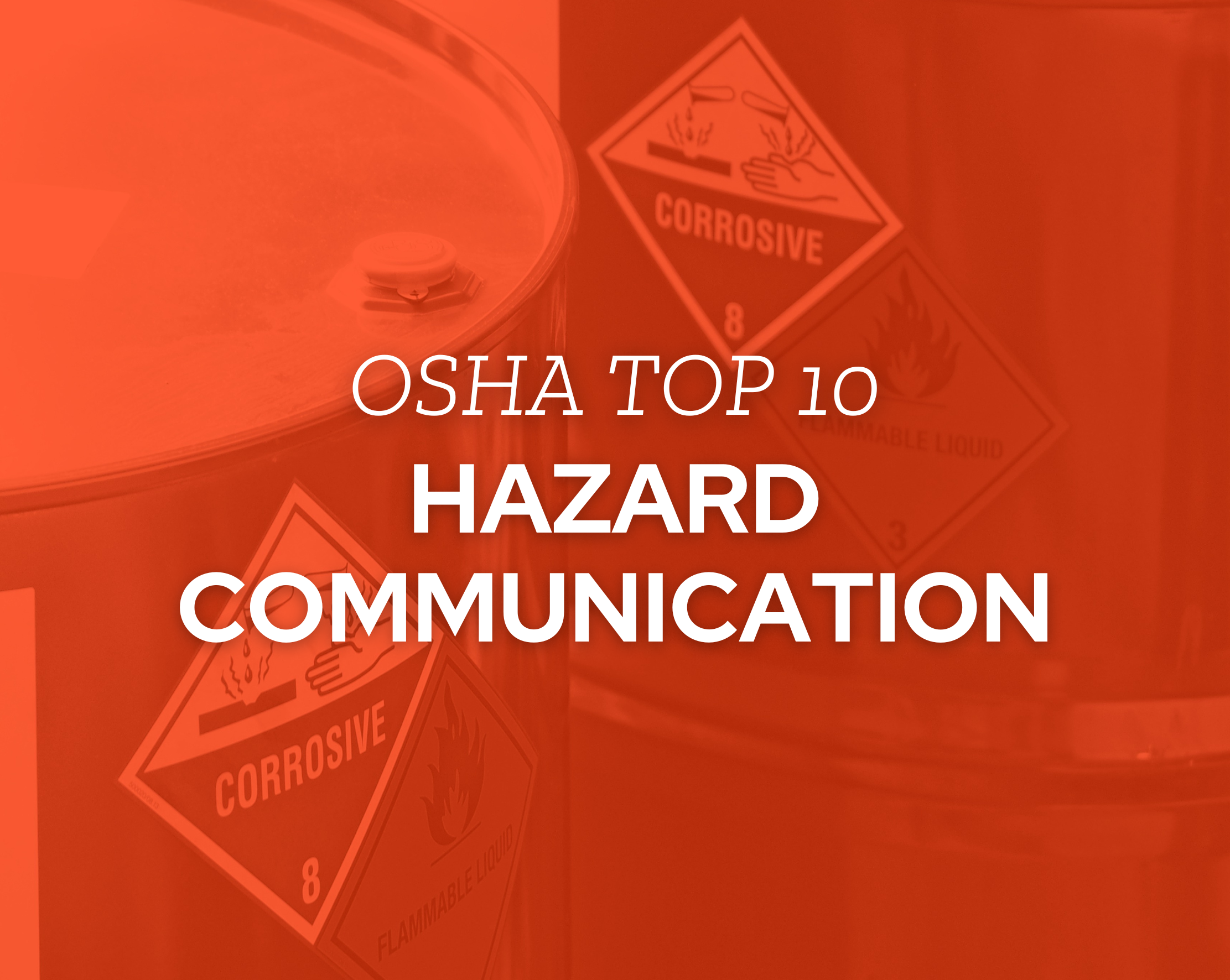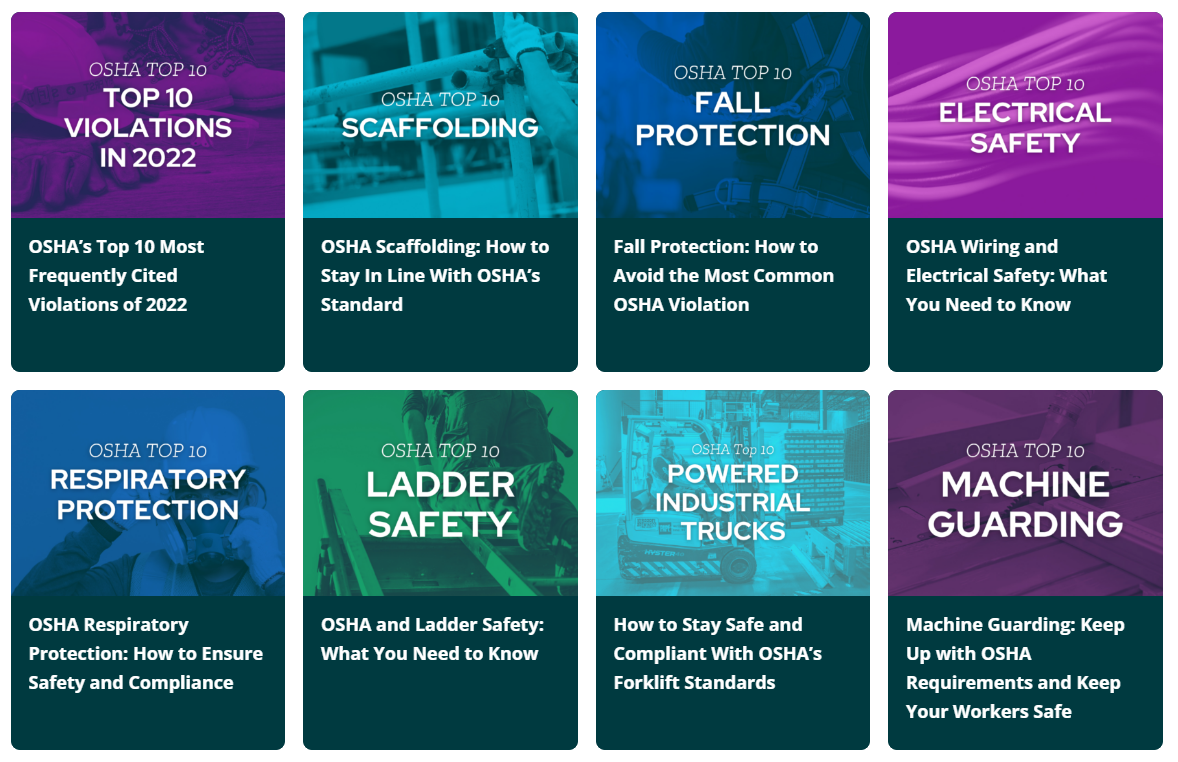OSHA’s Hazard Communication Standard: What it is and How to Protect Your Company
OSHA’s Hazard Communication Standard: What It Is
OSHA definition:
“OSHA’s Hazard Communication Standard (HCS) is based on a simple concept—that employees have both a need and a right to know the hazards and identities of the chemicals they are exposed to when working. They also need to know what protective measures are available to prevent adverse effects from occurring. OSHA designed the HCS to provide employees with the information they need to know.” (Source)
Simple definition:
The HCS is the way you’re supposed to inform your employees about dangerous chemicals in the workplace. It’s a set of rules that covers labeling and tracking chemicals, as well as employee training on chemicals.
Substances that fall under the HCS include…
- acids
- asbestos
- disinfectants
- glues
- lead, mercury, and other heavy metals
- paints
- pesticides
- petroleum products
- solvents
…and many more. In fact, according to OSHA, “[m]ost chemicals used in the workplace have some hazard potential, and thus will be covered by the rule.” For a full index of chemicals overseen by OSHA, click here.
Under the HCS, the following needs to be in place anywhere workers could be exposed to hazardous substances:
- material safety data sheets (MSDS or SDS for short) for every chemical on the jobsite
- a written hazard communication plan
- comprehensive hazard communication training for all workers who may be exposed to hazardous chemicals
Why Hazard Communication Standard Violations Happen
HCS violations usually happen because of the complexity and paperwork involved in compliance.
Organizations may fail to label their chemical containers properly, leave certain substances off of their chemical inventory lists, neglect to obtain SDS from manufacturers, or some combination of the above.
Many organizations get cited for not maintaining a hazard communication plan, or for failing to include necessary information in the written plan.
Sometimes, gaps in training can lead to violations. If not all workers have been trained, or if the training courses are incomplete or out of date, the organization can expect trouble from OSHA.
What You Stand to Lose When Hazard Communication Standard Violations Happen
Direct costs: OSHA penalties can exceed $15,000 per violation—and as much per day for every day the issue hasn’t been fixed by OSHA’s deadline. The fine for a willful or repeated violation can be 10 times as much.
Indirect costs:
- workers’ compensation claims from workers injured by chemical exposure
- lost productivity during and after an incident
- lowered workforce morale due to fear and uncertainty around chemical exposure
- labor hours spent tracking down and applying labels
- expenses of cleaning and replacing any damaged equipment after an accident due to hazard miscommunication
- legal and compliance fees
- negative publicity and reputational damage
Signs You’re at Risk of an OSHA Hazard Communication Standard Violation
If chemicals are ever in your workplace, you could be at risk of an HCS violation. As most organizations work with chemicals, it’s perhaps no surprise that HCS issues are currently the #2 most commonly cited OSHA standard, with 2,424 violations in 2022.
The more chemicals present, and the more those chemicals are used in the course of work, the greater the risk the organization faces. Industries with high numbers of incidents include metal fabrication, machinery manufacturing, auto repair, construction, and painting.
If you have a simplistic HCS communication plan, or no plan at all, you’re at risk of a violation.
If you aren’t maintaining and updating your datasheets, you’re at risk. If you don’t know if your SDS information is accurate, you’re at serious risk.
How to Avoid an HCS Violation: Prevention Checklist
Make sure this program is accessible and updated as needed—and at a minimum updated annually.
If not, we’ve got a great SDS solution for you.
Is there a plan on how to inform employees about chemicals an outside contractor may bring on-site?
This training should be done when a person is first hired or whenever a new hazard is present. Training should be documented and kept on-site or at an administrative office.
Any incoming shipments of chemicals must be stored with the factory label intact and not defaced in any way. Ensure the following is present: manufacturer’s name and address/phone number, product name, and a specific hazard warning. Contact the manufacturer for this information if it is unavailable.
Secondary containers include things such as spray bottles, squeeze bottles, dispensers, and used oil collection devices. These containers must be labeled with their contents, manufacturer name, and appropriate hazard warnings.
You Don’t Have to Manage Your OSHA Requirements Alone
Have questions? Looking for more detailed OSHA compliance guidance?
KPA is here to help.
To truly protect your workforce and bottom line, you’ll need in-depth information—and not just about OSHA’s top 10, but every potential hazard that exists in your organization. You’ll also need to conduct a thorough evaluation of your facilities to identify current gaps and risk areas.
KPA’s unique combination of software, training, and consulting services can provide the coverage your people and your organization need. For more information and guidance about preventing a hazard communication violation, please contact us.


